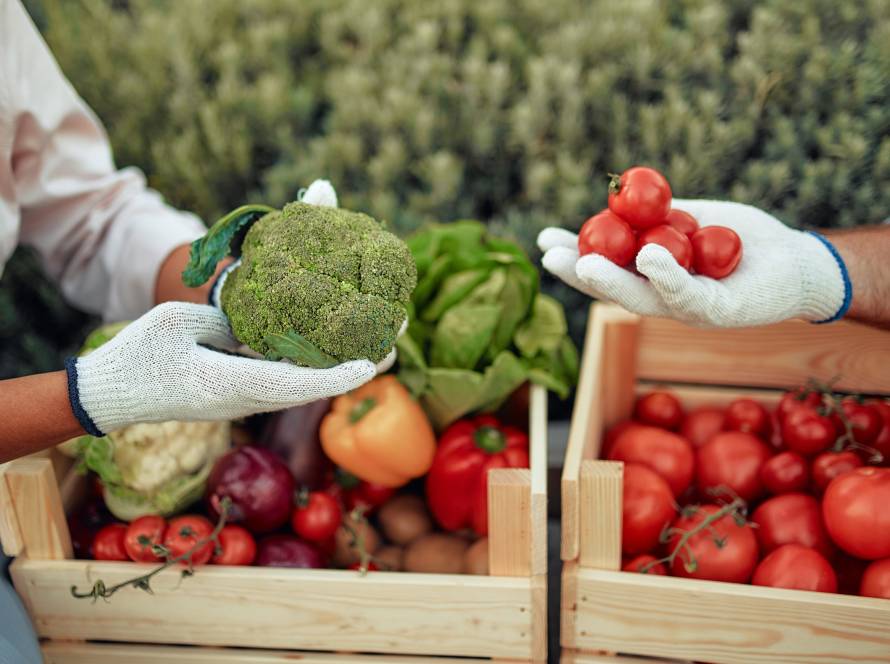Drought has become one of the most serious threats to the agricultural sector worldwide. Climate change and the unconscious use of natural resources have led to water scarcity, making efficient farming increasingly difficult. Especially in agriculture-based economies, water management has evolved from being merely an environmental issue to becoming an economic and social challenge. In this article, we will focus on drought and water management and examine the new approaches developed in agriculture.
1.The Impact of Drought on Agriculture
Drought is a long-term natural event that makes it difficult for crops to grow and reduces soil fertility due to insufficient rainfall. The decrease in water resources, inadequate irrigation systems, and reduced soil moisture levels are the primary challenges faced by farmers in the crop production process. The decline in agricultural production can lead to rising food prices, the risk of shortages, and loss of income for farmers.
In recent years, drought events have become more frequent and severe due to the effects of global warming. Farmers engaged in agriculture in regions such as the Mediterranean, the Middle East, and Africa are among the most affected by drought. Increasing temperatures and decreasing rainfall in these regions pose a serious threat to the sustainability of agricultural activities. However, new approaches to water management in agriculture can offer significant solutions to this problem.
2.Water Management and Sustainable Agriculture
Water is the most essential resource for agriculture. Water management encompasses strategies developed to use and conserve this resource effectively. Sustainable agriculture is based on the conscious use of water resources and aims to protect the soil, water, and biodiversity. While traditional farming methods result in significant water waste, modern approaches focus on achieving high yields with less water usage.
Drip Irrigation: One of the most effective methods in water management is the drip irrigation technique. Drip irrigation saves water by providing it slowly and steadily to the roots of plants. This method minimizes water loss and increases efficiency. Additionally, it prevents water waste by controlling the amount of water plants need.
Rainwater Harvesting: In arid regions where water resources are limited, traditional methods like rainwater harvesting have resurfaced. Water collected during rainfall can be used for irrigation and other agricultural activities. Rainwater storage systems are crucial for the efficient use of water resources.
Soil Management: Enhancing the water retention capacity of the soil plays a critical role in combating drought. Enriching the soil with organic matter allows water to be retained in the soil for longer periods. This makes it easier for plants to access water, preserving crop yield during drought periods. Additionally, regularly tilling the soil and using proper farming techniques help minimize water loss.
3.New Agricultural Technologies
The integration of technology into the agricultural sector has created a significant revolution in water management. Agricultural technology, with innovations such as efficient irrigation methods, sensors that optimize water consumption, and smart farming applications, has significantly reduced water usage in agriculture.
Smart Irrigation Systems: Today, sensors and software technologies have enabled the development of smart irrigation systems that optimize water consumption. These systems continuously monitor soil moisture levels and ensure that plants receive only the amount of water they need. This prevents unnecessary water consumption and increases efficiency in agriculture. Digitalization in agriculture provides an ideal solution for managing water usage, especially in large-scale farming operations.
Digital Water Management: Satellite data analyzes water usage on agricultural lands, enabling the more efficient use of water resources. Satellite imaging systems used in agriculture calculate when and how much water should be used, ensuring water conservation. Moreover, these systems provide farmers with real-time information about the condition of their crops, helping them combat drought.
4.Water Recycling
Water management in agriculture not only involves the efficient use of water but also the recycling of water. Recycling wastewater for agricultural use can contribute to the sustainable management of water resources. Water recycling in agriculture is an important way to address water scarcity, especially in arid regions.
Reuse of Wastewater: Reusing wastewater for irrigation allows agricultural activities to continue in regions suffering from water scarcity. Treated wastewater can provide a safe and efficient source of irrigation for plants. This approach prevents water waste and promotes sustainability in agriculture.
Desalination: Purifying seawater for use in agricultural irrigation is another important alternative in combating drought. Desalination is an effective method for increasing water resources, particularly in coastal areas. However, desalination plants can be costly and require careful management in terms of energy consumption.
5.The Future of Sustainable Agriculture and Water Management
Drought and water management will become even more critical for the sustainability of agriculture in the future. As climate change leads to a decrease in global water resources and an increase in drought events, the agricultural sector is developing innovative approaches to address these challenges. Innovations in water management and agricultural production will enable significant steps to be taken in the fight against drought.
Sustainable Water Management Policies: Governments must adopt sustainable policies to protect water resources and improve water management in agriculture. The efficient management of agricultural water usage is a crucial step in combating drought. Educating farmers, using water-saving technologies, and ensuring the efficient distribution of water are key elements of these policies.
Cooperative and Community-Based Solutions: Water management is not only the responsibility of individual farmers but can also be achieved through the active participation of communities and cooperatives. Water-sharing systems, collective irrigation systems, and projects supported by local governments offer effective solutions in water management.
Drought and water management are among the most critical factors shaping the future of the agricultural sector. Climate change and increasing water scarcity necessitate new approaches for the sustainability of agriculture. Sustainable farming practices, efficient water management techniques, and technological innovations help the agricultural sector optimize water usage and combat drought. To ensure agriculture can progress during this challenging period, understanding the value of water and managing it efficiently has become a necessity.





